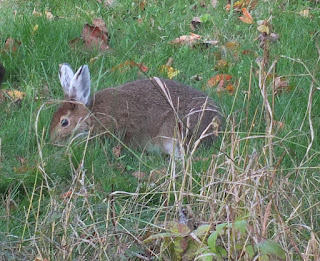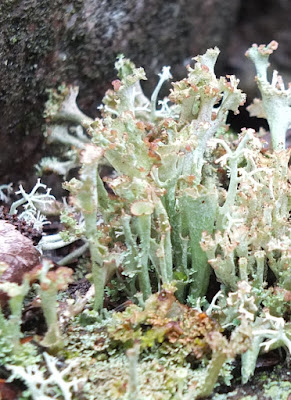NIPIGON BAY, LAKE SUPERIOR
1876
Written for the Thunder Bay Sentinel newspaper by A.
Walpole Roland, November 13, 1876
SIR—In
consequence of the early closing of Navigation I was unable to forward the
promised sketch of the Nipigon Lake and River district before the departure of
our first winter mail, which leaves here “weather permitting” on the 14th
proximo. Of the River as a famous trout
stream, little remains to be said that is not tolerably well known to most of
your readers, but of the district,
generally, it may be said to afford a rare example of the economy of nature in
grouping together --- the useful and the beautiful.
“Rock
and River --- tinged with Amethyst, half seen, half hidden, by the hazy mist.”
Of the native grandeur of the surrounding scenery there can
be no question; and that
the soil is in many places as rich and good as any in the lower Provinces is
fairly admitted by competent and impartial judges; and of its mineral wealth, etc., more anon.
The River is the largest and clearest water flowing into Lake
Superior --- and the
Harbour entrance with bald ridges of columnar trap, and red rock, rising from
the water edge to a perpendicular height of nearly 500 feet is very
picturesque. At this point the River
measures about two thousand yards but gradually opens out on the west side,
where the high saddle-back headland runs due west, giving place to a rich belt
of splendid land carrying north east to the River’s mouth and forming a perfectly secure Harbour with
sufficient depth of water for vessels of any class. A steamboat channel runs nearly straight and
due north to the H.B. Co.’s Post, Red Rock, a distance of three and a half
miles from entrance to the Harbour, where navigation by steamer , may be said
to end.
Then the
Hudson’s Bay Company held an important trading post and Depot for their
interior supplies, and one of the finest
docks west of Montreal, measuring over 130 yards, with a depth of from 11
to 14 feet of water at all seasons.
Many improvements have been made in this
district, and within the last few years Townships and town lots have been
surveyed and disposed of to eager and ENTERPRISING speculators, at a time when hopes were fondly entertained, of this
becoming the Lake Superior terminus of the coming railroad.
Nipigon ,
however, like your own magnificent Thunder Bay, lacked the necessary natural
qualifications, that is, an “old sand bar,” consequently the scheme was
abandoned and the terminus “moved on” – to a more favoured location.
The Nipigon
it is true, can boast of a small “sand bar” of her own, as one or two Lake
Superior Captains can testify with regret. But why did they attempt the impossible feat
of making a short portage instead of coming by the old route? In a previous letter I gave a brief
description of the “Co.’s” Post etc., so that excepting an additional “exploratory line” there is
nothing new and really , judging from the number of C.P.R. lines together with
the absence of any real engineering difficulty we may yet see this portion of
the railroad in progress. But until the
financial difficulties are bridged over, we cannot reasonable hope of, ever
hearing of the discovery of a practicable route.
Going Up The River
Near the
H.B.Co.’s dock , commences one of the swiftest currents on the River, sweeping
downwards from the Lake Helen rapids with a velocity of 5 knots per hour. Lake Helen, a beautiful sheet of deep,
clearly blue water, is nine miles long,
two broad and one mile from steam boat dock. The River enters this lake from the west side,
and its upward course is N.N.W. to camp Alexander, a distance of five miles,
where the current is again pretty stiff to the Alexander rapids, when another
portage is made by canoeing up Portage Brook for one mile, and where a portage
of two miles connects to Lake Jessie.
Opposite Portage Brook is Cameron’s Pool, “Pectorabus Sacrum,” where Mr.
Cameron of Cincinnati , and the Isaac Walton of the Nipigon, has for 15
successive seasons, landed speckled trout that would rather astonish the author
of the “Complete Angler.” Lake Jessie or Minor Lake is a very pretty bit of
water, -- with numerous small islands, and separated from Lake Maria by the
Narrows, where the River measures no more than 100 yards across. The entire distance over both lakes including
“ the Narrows,” is about 6 miles, the next portage is “Split Rock”, and is but
a short one. The scenery here is very fine and continues to improve as we
ascend , the River being here bounded on both banks, by high ridges of black
traprock. A little higher up Island
Portage is made ( or run by a small canal) by curving over a small rocky Island
in centre of the River.
One miles
brings us to the foot of Pine, or “One Mile Portage”. Another mile from the
head of Pine Portage is a rather dangerous fall, or rapid, where the water
comes flowing down as they do at “Ladore.”
Near this fall is Little Flat Rock Portage, where the H.B.Co.’s canoe route branches off, running West
through Lake Emma and Hanna and reaching Lake Nipigon by an easier and more direct
route than that of the River, when rapids increase in number and velocity
between Lake Emma, Camps Victoria and Minor, to the Grand Fall, or head waters
of the River St. Lawrence. We now stand
on the South Shore of Nipigon Lake, and about 350 feet above the level of the
mouth of the River and distant about 33 miles.
This spot
may be called the Ultima Thule of tourists and sportsmen all in this direction:
few caring to advance beyond the Falls from whence a very fine view of many of
the islands is obtained, bounded in the west, by the pale blue mountains, and
in the far away north by the sky. This great inland sea measures nearly 70 x 50
miles, with over 1,000 islands of various dimensions; and a coast line of over 500 miles. Among the many natural features worthy of
special mention an “Echo Rock” and the Inner and Outer Barn, the latter rising
from the surface of the Lake almost perpendicularly, to a height of over 600
feet, with tons of over-hanging masses of rock apparently ready to come
tumbling down upon the slightest provocation;
while higher yet the hardy fir and mountain ash flourishing luxuriantly
and waves defiance to the winds. How truly are these subjects worthy of the
magic touch of the artist’s pencil. Never have I witnessed more equitable
changes of light and shade, not more striking contrasts of the bold and
beautiful. As I close this hurried
sketch the “Indian Summer” sun is fast disappearing behind the lofty Mount St.
John with a brilliant glow of fiery red, that brings back pleasant memories of
sunsets in Oriental claims:
Is there not
in yonder glorious scene,
A beauty and
a grandeur not of earth
A glory
breaking from yon cloudy screen;
Revealing to
the (…) its nobler berth!
The Nipigon
region has been thoroughly explored by Captain G. B. Weeks, with his Surveyors
and assistant, (under the direction of Professor Campbell of N. York,) with the
most satisfactory results. Captain W. is
at present supt. one of his latest discoveries, “The Victoria” and when last
heard from had out “150 tons good ore, with 300 of low grade concentrating ---and
shaft 30 feet.”
At a more
convenient time I shall have much pleasure in giving particulars of current
events. Mining, I am assured, will go
ahead here lively, bye and bye. “Rome
wasn’t built in a day,” you know.
-
A.
W. R.










































